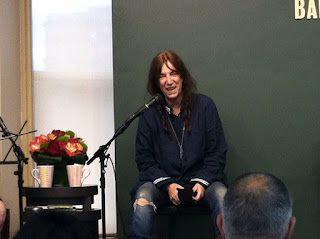“I’ll tell you what,” she said not-so-softly, tilting straw hat ever so slightly toward the blazing sun, “you can’t just go around saying any goddam thing you like anytime , any place you like. They should’ve known better, those girls.”
They should have known better. The words echoed and bounced around in my head as the gin and tonic glinted in the the afternoon sunshine. Should the members of Pussy Riot -Nadezhda Tolokonnikova, 22, Ekaterina Samutsevich, 30, and Maria Alekhina, 24 -stayed quiet? Writer Lynn Crosie recently observed that the girls’ actions were “hideous” to have happened in a church. Watching the video for their new single, it’s not difficult to see how they offended traditional, church-going sensibilities. The elderly nuns look perplexed and more than a bit pissed off by these pesky masked aerobi-dancing young women. But the protest did not involve any swear words or cussing, nor did it use a holy name in any obscene way; it lasted less than a minute and invoked a religious figure, in a sincere request for delivery from a perceived (if very real, to every day Russians) evil. The hypocrisy of the trial and obscene harshness of the sentence are all out of proportion to the actual crime, but Pussy Riot have become an international cause celebre in the process.
The whole affair points to a fetid underbelly of the ruling Russian politburo worthy of deeper investigation and exploration. The name “Anna Politkovskaya” floats somehow, ghostly, above all of this. But what’s been heartening lately has been the outpouring of sincere support from various outspoken celebrities, including the holy (and wholly inspiring, to my mind) triumvirate of artsy female greatness; Madonna, Bjork, and Patti Smith have let it be publicly known they stand with the three members of Pussy Riot. Madonna donned a mask and wrote the band’s name in marker on her own body during a concert in Oslo; Bjork did a manic live dance with a bevy of female chorister-musicians, shrieking in her signature banshee-like howl above the din. It was a beautiful, if perfect echo of Pussy Riot’s own protest in one of Russia’s holiest sites.
“Jesus Christ would fucking forgive them!” roared Smith at recent concert in Stockholm. One senses she’s right. Surely Jesus would smile at the ballsy, youthful vigor of it all. It’s surreal, the protest -tacky, surreal, unsettling, gormless, and… young. That brave, outrageous, ballsy stuff we do when we’re young translates into the stuff we awkwardly admire from the comfortable distance of gap-toothed time and fat adulthood. We may not do it again… but damn, we want to.
The childlike sincerity of Pussy Riot’s protest dances with a childish desire to shock, which isn’t so childish if you know the admittedly scary politics of Putin’s Russia. It’s as if the rioters, in using the slang for female genitalia so boldly, and doing their funky young-wooman-goddess-thing in a Christian environ, are asking people to stop and think where true power lies in 2012 Russia, and where it should lie; they’re daring people to stop, to think, to choose, and to reconsider. As Crosbie wisely notes, “the word “pussy” has been on everyone’s lips for weeks. It’s hard to imagine a more simple and more complex way of disseminating the blunt, beautiful nature of the girls’ mission.” Those colorful masked figures are 2012’s gangly, Gaia-like, guitar-slinging Teletubbies, Mother Russia’s monstrous, balaclava’d court jesters, pointing up the ridiculous nudity of Sovereign, State, and Society. All we can do, us boring grown-up women, is stand and smile as they call upon the Saint for delivery, mouths open, eyes wide, inspired by the bravery of youth and the beautiful danger of pussy power in holy houses made flesh and blood.
Jesus would forgive them – even if they knew better, but most especially if they didn’t.

